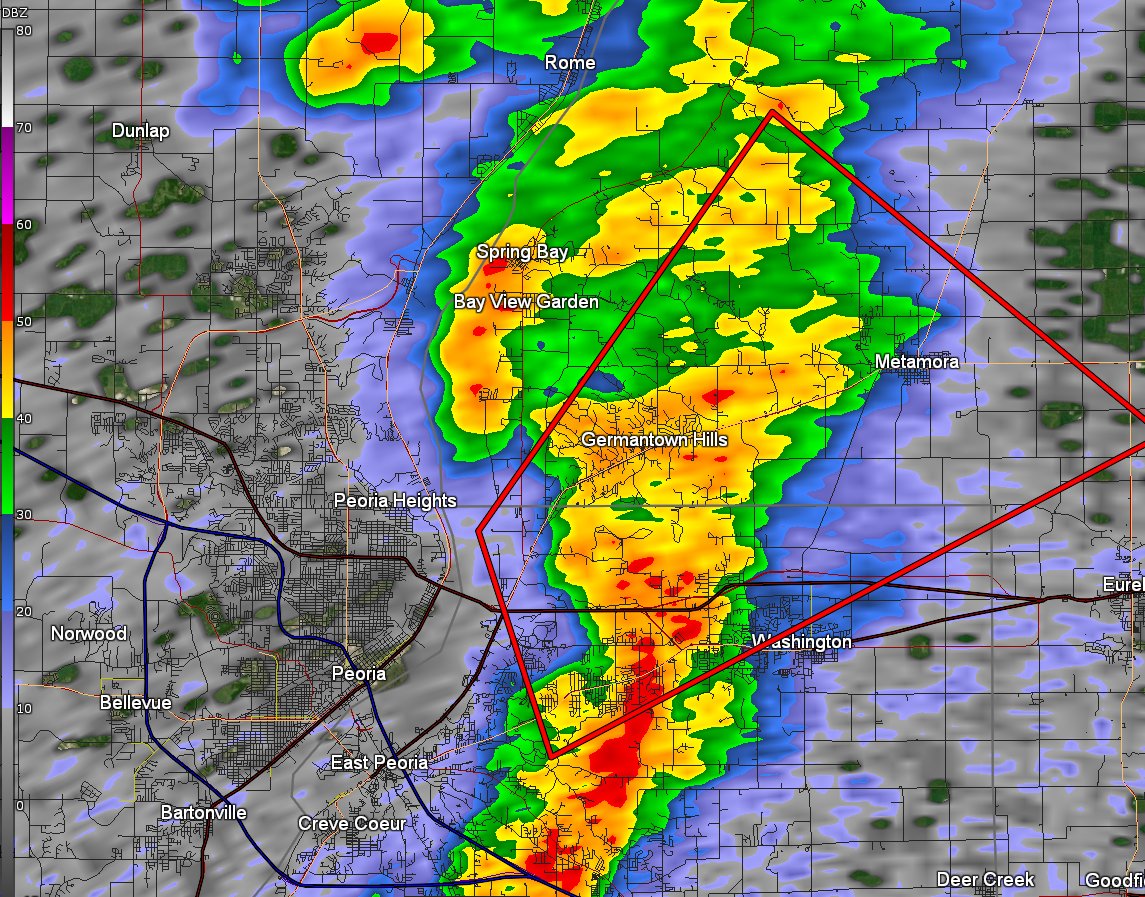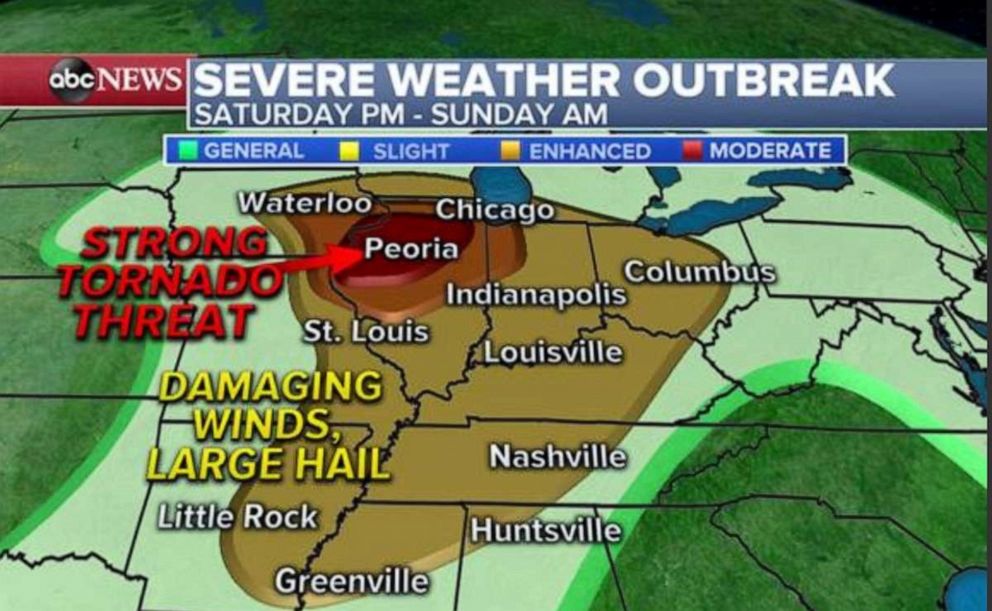Understanding And Preparing For Tornadoes In Peoria, IL
Tornadoes rank among the most formidable and unpredictable natural disasters, and Peoria, IL, has not escaped their fury. These cataclysmic events leave indelible marks on communities, homes, and lives. Gaining insight into tornado behavior is essential for the residents of Peoria to ensure safety during these emergencies. This article delves into the historical occurrences, causes, and effects of tornadoes in Peoria, IL, along with providing practical advice on preparedness and safety measures.
Peoria, IL, has a history of experiencing tornadoes, with several significant storms impacting the region over the years. Recognizing warning signs and preparing adequately is crucial. With the right knowledge and planning, residents can mitigate risks and safeguard themselves and their families from harm.
This article aims to offer a comprehensive understanding of tornadoes in Peoria, IL, covering historical data and modern preparedness strategies. We seek to equip readers with the tools necessary to confront the dangers posed by these natural phenomena, ensuring they remain informed and confident in their ability to respond effectively.
Read also:Exploring The Lives Of Ellen Pompeos Children A Journey Of Family And Fame
Contents
- Historical Overview of Tornadoes in Peoria, IL
- Factors Leading to Tornado Formation
- The Broader Impact on Communities
- Essential Safety Measures During a Tornado
- Strategies for Effective Preparation
- Advanced Early Warning Systems
- Community Recovery and Relief Efforts
- Statistical Insights into Tornadoes in Peoria, IL
- Dispelling Common Myths About Tornadoes
- Valuable Resources and Links
Historical Overview of Tornadoes in Peoria, IL
The history of Peoria, IL, is punctuated by severe weather events, including tornadoes. The earliest documented tornado in the area dates back to the late 1800s, and since then, the region has been subjected to numerous storms of varying intensities. Some of the most catastrophic tornadoes occurred in the mid-20th century, leaving extensive destruction and loss of life in their wake.
While advancements in meteorology and technology have enhanced the ability to predict and respond to tornadoes, the potential for devastation remains significant. Understanding the historical context of these storms is vital in preparing for future occurrences.
Notable Tornado Events in Peoria, IL
Several tornadoes in Peoria, IL, have gained attention due to their severity and impact. Below are some of the most significant events:
- 1990: An EF3 tornado devastated the city, causing millions of dollars in damage and injuring dozens of residents.
- 2013: A series of tornadoes struck the area, with one reaching EF4 strength, destroying numerous homes and businesses.
- 2017: An EF2 tornado caused significant disruption in parts of Peoria, underscoring the ongoing threat posed by these storms.
Factors Leading to Tornado Formation
Tornadoes form under specific atmospheric conditions that create instability and rotation in the air. In Peoria, IL, these conditions often emerge during spring and summer when warm, moist air from the Gulf of Mexico meets cooler, drier air from the north. This convergence creates an ideal environment for tornado development.
Key Elements in Tornado Formation
Several elements contribute to the formation of tornadoes:
- Wind Shear: Variations in wind speed and direction with altitude generate rotation in the atmosphere.
- Instability: Rapidly rising warm, moist air provides the energy necessary for tornado formation.
- Lift: Weather features such as fronts or drylines provide the lift needed to initiate thunderstorm development.
The Broader Impact on Communities
Tornadoes in Peoria, IL, have profound effects on communities, encompassing both physical destruction and emotional trauma. Homes, businesses, and infrastructure are often severely damaged, leaving residents to rebuild their lives. The psychological impact on survivors can be substantial, with many experiencing anxiety and fear long after the storm has passed.
Read also:Rodney Terry A Comprehensive Overview
Community support and recovery efforts are pivotal in helping people overcome these challenges. Local organizations, government agencies, and volunteers collaborate to provide assistance and resources to those affected by tornadoes.
Community Response and Support Mechanisms
Various initiatives are in place to aid communities impacted by tornadoes in Peoria, IL:
- Temporary housing and financial assistance for displaced families.
- Counseling services to address mental health concerns.
- Volunteer-driven cleanup and rebuilding programs.
Essential Safety Measures During a Tornado
Knowing how to respond during a tornado can be life-saving. Residents of Peoria, IL, should acquaint themselves with safety protocols and practice them regularly to ensure readiness when a storm occurs.
During a tornado, it is critical to seek shelter immediately in a secure location, such as a basement or an interior room on the lowest floor of a building. Avoid windows and exterior walls, as flying debris poses a significant risk.
Tornado Safety Guidelines
- Stay informed by monitoring weather alerts and updates.
- Assemble an emergency kit with essential supplies, including food, water, and first aid items.
- Develop a family communication plan to ensure everyone knows what to do in an emergency.
Strategies for Effective Preparation
Preparation is fundamental to surviving a tornado in Peoria, IL. By taking proactive measures, residents can reduce their vulnerability and enhance their chances of staying safe during severe weather events.
This includes reinforcing homes with storm-resistant materials, securing outdoor items that could become projectiles, and participating in community drills and training sessions.
Long-Term Preparedness Approaches
Consider the following strategies for long-term tornado preparedness:
- Install storm shelters or safe rooms in your home.
- Invest in weather radios and apps that provide real-time updates.
- Participate in local emergency management programs and workshops.
Advanced Early Warning Systems
Early warning systems are indispensable for safeguarding lives during tornadoes in Peoria, IL. These systems leverage advanced technology to detect storms and provide timely alerts to the public, enabling them to take action before a tornado strikes.
Modern warning systems incorporate Doppler radar, satellite imagery, and automated sensors that monitor atmospheric conditions. These tools assist meteorologists in issuing accurate and timely warnings, granting residents more time to prepare.
How Early Warning Systems Operate
Here's how early warning systems function:
- Radar identifies rotation in storm clouds.
- Data is analyzed to determine the likelihood of a tornado forming.
- Warnings are disseminated through multiple channels, including sirens, text messages, and social media.
Community Recovery and Relief Efforts
Post-tornado recovery focuses on restoring normalcy to affected communities. This involves clearing debris, repairing infrastructure, and providing support to those in need. Government agencies, nonprofit organizations, and volunteers collaborate to ensure a swift and effective recovery process.
Residents of Peoria, IL, are encouraged to contribute to recovery efforts by volunteering their time, donating resources, or supporting local businesses impacted by the storm.
Steps Toward Recovery
- Assess damage and prioritize repairs to essential services.
- Engage with local authorities and relief organizations for assistance.
- Encourage community involvement in rebuilding initiatives.
Statistical Insights into Tornadoes in Peoria, IL
Data and statistics provide valuable insights into the frequency and intensity of tornadoes in Peoria, IL. According to the National Weather Service, the region experiences an average of 3-5 tornadoes annually, with most occurring between March and June.
These statistics highlight the importance of preparedness and awareness, as even a single tornado can have devastating consequences.
Key Statistics
- Average annual tornado count: 3-5
- Most common months: March to June
- Highest recorded EF rating: EF4
Dispelling Common Myths About Tornadoes
Several misconceptions about tornadoes can lead to unsafe practices. It is crucial to differentiate fact from fiction to ensure proper safety measures are taken.
One prevalent myth is that opening windows during a tornado will equalize pressure and prevent damage. In reality, this action has no effect on the storm and can actually increase the risk of injury from flying glass.
Debunking Myths
- Opening windows does not protect against tornadoes.
- Seeking shelter under overpasses is not safe; instead, find low-lying areas.
- Tornadoes can occur at any time of year, not just during traditional "tornado season."
Valuable Resources and Links
For additional information on tornadoes in Peoria, IL, explore the following resources:
Conclusion
Tornadoes in Peoria, IL, present a significant threat to the community, but with proper knowledge and preparation, residents can reduce risks and protect themselves and their loved ones. This article has explored the historical occurrences, causes, and effects of tornadoes, along with safety measures, early warning systems, and recovery efforts. By staying informed and taking proactive steps, Peoria residents can face these challenges with confidence.
We encourage you to share this article with friends and family, leave a comment with your thoughts, and explore other resources on our website to enhance your understanding of severe weather preparedness. Together, we can build a safer, more resilient community.


